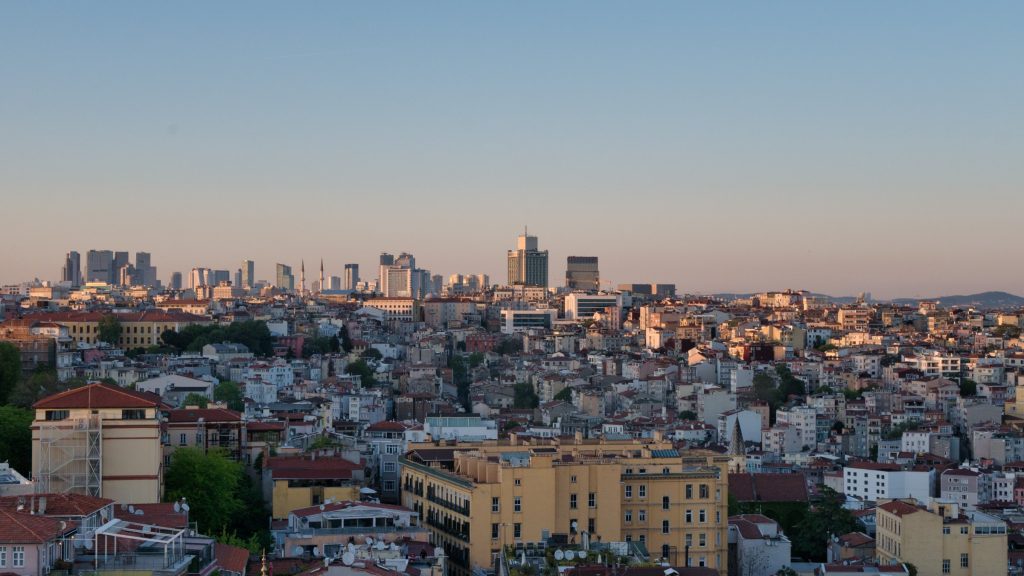Following a magnitude 6.2 earthquake centered in Silivri, a district of Istanbul, on April 23, attention has once again turned to the city’s vulnerable building stock.
Although awareness increased after the twin earthquakes in Kahramanmaraş two years ago, millions of homes in Türkiye remain at risk. While more than 3.5 million homes have been renovated across the country over the past 22 years, approximately 6 million residential buildings remain classified as risky. Of those, an estimated 1.5 million are in Istanbul alone. Experts warn that around 600,000 homes in the city are in urgent need of demolition.
Hüseyin Kılınçarslan, president of the Urbanism and Urban Transformation Association, warned that a potential earthquake with a magnitude between 7.0 and 7.5 in Istanbul could damage more than 500,000 buildings. Of these, around 48,000 are expected to suffer severe damage, while 146,000 may be moderately affected.
Kılınçarslan emphasized that urban transformation and structural reinforcement are now crucial not only for physical reconstruction but also for the city’s social and economic revitalization. He emphasized that transformation is not just about rebuilding structures, but also about enhancing the quality of life, promoting environmental sustainability and building a more resilient city, including its industrial areas.
He said the effort to improve Istanbul’s housing, which gained attention after the 1999 earthquake, is still not complete. He highlighted the urgent need to demolish unsafe buildings, construct earthquake-resistant homes, reinforce existing structures and enhance building inspections.
He also emphasized that relocating industrial facilities out of urban areas and into designated industrial zones is crucial. This would help reduce pollution, create more green spaces and support growth in other regions.
“Istanbul’s future depends on how well we manage urban transformation and strengthening efforts,” Kılınçarslan said. He added that the government, private sector and civil society must work together.
“If Istanbul succeeds in this, it can become a model for the world. Urban transformation is a matter of national survival,” Kılınçarslan said.
Mustafa Ekiz, president of the Real Estate and Construction Platform, emphasized the need to raise public awareness and promote voluntary participation in urban transformation.
“We need to explain the vital importance of urban transformation and building reinforcement, the risks involved, and the long-term benefits,” he said.
He called for simplifying bureaucratic processes to accelerate projects, stating: “Streamlining regulations, shortening approval timelines, and coordinating efforts through a single agency would help accelerate projects.”
Ekiz also urged expanding financial support, including “low-interest loans, rent assistance, and tax exemptions.”
He highlighted the importance of cooperation among all sectors, saying: “Stronger collaboration among local governments, the central administration, the private sector and civil society is essential.”
He supported the use of industrialized construction methods, such as prefabrication and the integration of technology, to enhance safety and reduce costs.
Ekiz stressed that priority should be given to high-risk areas identified in Istanbul’s earthquake risk map. “Citizens living in these areas need clear communication and tailored support. They must be involved in every step of the process and kept well-informed,” he said.
He encouraged greater private sector investment and the use of international funding through public-private partnerships, warning: “Residents in risky buildings should no longer delay participating in transformation.”
Structural reinforcement expert Sinan Türkkan highlighted that out of 6 million risky homes across Türkiye, around 5 million could still be saved through proper strengthening.
“We must take immediate action for at least 150,000 of the 600,000 high-risk homes in Istanbul,” he urged.
Türkkan emphasized that reinforcement relies on scientific principles and offers a faster, more affordable alternative to complete urban transformation. “Building collapse is not fate. When the ground, materials, and systems are right, buildings can stand strong. Even if older structures lack these conditions, we can still make them safe through reinforcement,” he said.
He clarified that reinforcement isn’t just cosmetic renovation; it’s a technical process to upgrade buildings to meet earthquake safety standards.
“A building we strengthened in 2008 survived the recent Hatay earthquake,” he noted.
In areas where zoning laws prevent rebuilding, Türkkan argued that reinforcement may be the only realistic solution. “We need to confront the facts, have our buildings evaluated for earthquake performance and decide whether to strengthen or rebuild,” he said.
To speed up the process, he called for simplifying regulations and updating loan conditions for reinforcement projects. Türkkan criticized the requirement for 80% resident approval, explaining that in small buildings, a single dissenting vote can stop progress. He also recommended lowering VAT for reinforcement works and placing trained personnel in municipal offices to guide and support these efforts.


